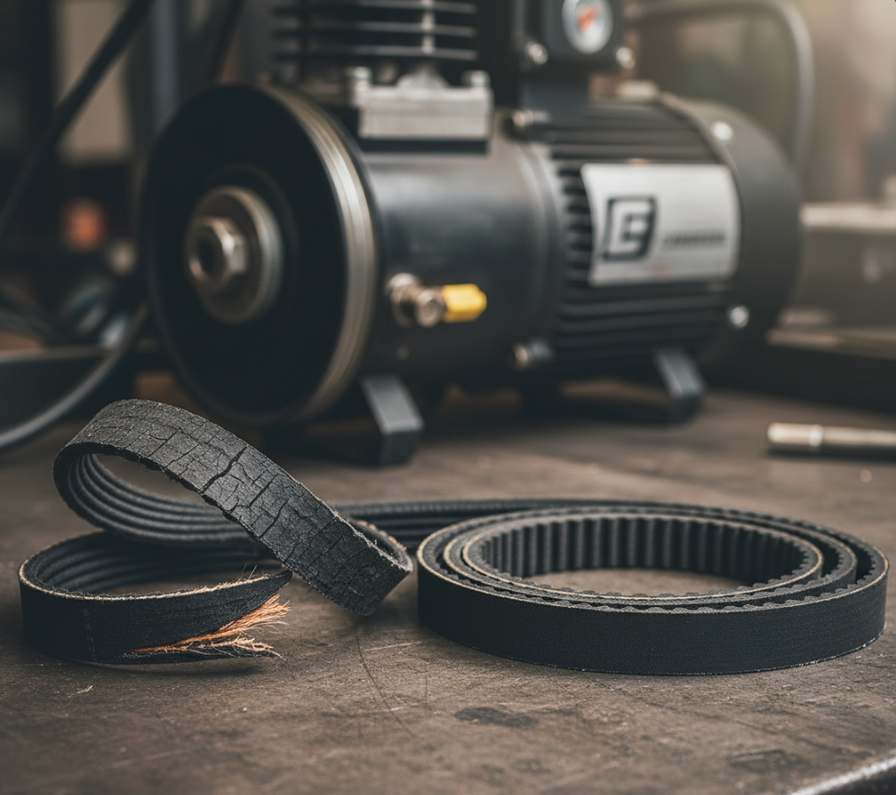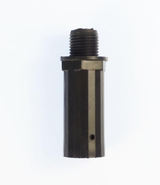Troubleshooting Your Air Compressor's Belt: Squeals, Slips, & Snaps
Don't let a bad belt shut down your workshop. Learn to diagnose and fix the most common air compressor belt problems like a pro.
The belt is the unsung hero of your air compressor, the critical link between the motor and the pump. When it's running right, you don't notice it. When it starts acting up—with a gut-wrenching squeal, a frustrating slip, or a catastrophic snap—it's signaling that major damage or costly downtime is imminent.
At Master Tool Repair, we specialize in keeping your tools running, and that starts with quality replacement parts. Here is your definitive guide to troubleshooting, diagnosing, and fixing the three biggest air compressor belt issues.
1. The Squeal: A Cry for Attention (or Tension)
A high-pitched squeal is the most common and annoying belt symptom. It almost always means the belt is moving too quickly over the pulley face—a condition known as slipping.
|
The Problem |
The Fix |
|
Loose Tension |
The most frequent culprit. The belt needs to be tight enough to transmit power without excessive friction. There should be no more or less than ½” of deflection in the belt when you press down on it at the center point between the pulley and the flywheel. |
|
Worn Pulleys or Sheaves |
If the groove on the pulley is worn down, the belt can ride too low, causing slippage and noise. |
|
Belt Glazing / Contamination |
Oil, grease, or dirt on the belt can cause it to slip and squeal, even if the tension is correct. |
2. The Slip: Power Loss and Overheating
A persistent slip reduces the efficiency of your compressor, causing it to run longer, overheat the motor, and struggle to reach full pressure. Slipping usually happens under load, and it's often accompanied by that loud squeal.
|
The Problem |
The Fix |
|
Incorrect Belt Type |
Using the wrong type (e.g., a standard V-belt instead of a required cogged belt) can lead to insufficient grip. |
|
Pulley Misalignment |
If the motor and pump pulleys are not perfectly aligned, the belt can rub unevenly, leading to wear, overheating, and slipping. |
|
Deep Wear |
The sidewalls of the belt may be worn down, preventing it from properly seating in the pulley groove. |
3. The Snap: Catastrophic Failure
A belt that snaps is usually a sign of extreme stress. This is the ultimate failure, bringing your operation to an abrupt, screeching halt.
|
The Problem |
The Fix |
|
Belt Fatigue (Old Age) |
Belts crack, dry out, and weaken over time due to exposure to heat and repeated flexing. |
|
Excessive Tension |
While too loose is bad, too tight is worse. Over-tightening puts immense strain on the belt, motor bearings, and pump bearings, leading to premature belt failure and component wear. There should be no more or less than ½” of deflection in the belt when you press down on it at the center point between the pulley and the flywheel. |
|
Sudden Jam/ Lock-up |
A foreign object, or an internal pump/motor issue, can cause a sudden lock-up, instantly snapping the belt. |
Troubleshooting your belt is only the first step. When it comes time to replace your worn-out parts, don't settle for generics. A high-quality replacement belt from Master Tool Repair is engineered to fit your specific model, ensuring maximum power transmission and longevity. Don't wait for the next squeal or snap. Get the right parts today and get back to work.
Recent Posts
-
Air Compressor Pressure Switches: Beyond the Basics of Adjustment
The Brain of the Beast: Understanding Your Pressure Switch The pressure switch is the unsung hero of …Dec 10, 2025 -
The Breath of the Pump: Why Your Air Compressor Needs a Healthy Crankcase Breather/Vent
Your air compressor is a powerhouse, a workhorse essential to your operation. We all know the import …Dec 4, 2025 -
The Quiet Killer: How a Clogged Air Compressor Filter Destroys Your Pump
A well-maintained air compressor is the lifeblood of your workshop or job site. It runs reliably, re …Nov 19, 2025




